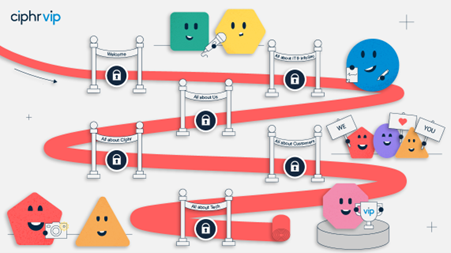Hiring is, arguably, the lifeblood of any efficient, effective and productive organisation. Fail to hire the right people for the right roles, and your business will undoubtedly encounter difficulties meetings its goals. Improve your hiring process, and you’ll find yourself hiring better people, more quickly, and achieving your goals more easily.
But the labour market conditions that UK organisations face are challenging. Nearly two-fifths (38%) of employers have hard-to-fill vacancies, according to the Autumn 2023 CIPD Labour Market Outlook. And they are especially prevalent in sectors such as education (51%) and healthcare (42%). These challenges are reflected in the length of time it’s taking companies to fill vacancies; the TotalJobs Hiring Trends Index Q3 2023 put the UK average time to hire at more than six weeks.
And that’s just some of the external recruitment challenges that HR, people and talent teams have to contend with. Skills shortages, the cost-of-living crisis, global economic uncertainty and greater candidate expectations when it comes to flexible working are all making it more and more challenging to hire the right people.
The good news, though, is that there are lots of factors within your team’s control. You can improve your hiring process so that every step of the recruitment journey is optimised, streamlined and effective. In this article, we’ll share the 11-step process that Ciphr – a leading UK HR software provider – followed to overhaul how it hires and secure its long-term success.
How to improve your hiring process:
an 11-step plan
- Build a dedicated talent acquisition team
- Analyse current metrics and processes
- Clarify your objectives
- Involve key stakeholders
- Reevaluate job profiles
- Train hiring managers
- Review sourcing and selection strategies
- Enhance the candidate experience
- Improve your onboarding process
- Build your employer brand
- Continually monitor and refine performance
Watch: how to get your hiring processes in shape
1. Build a dedicated talent acquisition team
Not every organisation will be able to build its own dedicated internal talent acquisition team. But if you don’t currently have one, it’s worth reassessing the business case for it periodically to decide if the time is right to either bring hiring in-house (if you’re currently reliant on external recruitment agencies), or to invest in recruitment-specific job roles, if hiring if currently the remit of an HR generalist.
Remember, the first person in your organisation that a candidate is likely to speak to will be someone in your HR, people or recruitment team. Do you want that to be a stressed, overwhelmed HR generalist? Or do you want that to be a talent specialist who has the time, energy and expertise to properly qualify candidates, seek out passive talent and act as a brand ambassador? The choice is yours.
2. Analyse current metrics and processes
Now your team is in place, it’s time to get the lay of the land. Current and historic data will help you identify areas of underperformance and what you’re doing well. You need the cold, hard facts about your hiring process if you are to improve. What’s your time to hire? How much does it cost to fill each role? What are your 90-day, 6-month and 12-month retention rates? You should be able to report on all these and many more key HR metrics using the analytics tools in your HR and recruitment software.
If you haven’t historically been tracking these metrics, you may want to implement a baseline reporting period of, say, six months. Then you can start to identify seasonal trends and fluctuations, and identify if results are improving or declining because of the improvements you make to your hiring process.
3. Clarify your objectives
Now we can move on to setting objectives and timescales for achieving them. They might include, for example, reducing average time to hire from 45 days to 30 days over six months. Or they might be to fill 10% of vacancies with internal applicants over the course of a full year. Whatever you’re measuring, set a SMART (specific, measurable, achievable, relevant, time-bound) goal to work towards.
Remember, though, not to be too hard on yourself. Those external challenges we mentioned earlier? They’ll always be there to thwart your best-laid plans. All you can do is control what’s within your control – and relax about the rest.
4. Involve key stakeholders
So your goals are in place. But you can’t improve your hiring process on your own; managers and senior leaders all have a part to play in turning your organisation into a well-oiled recruitment machine. They are the glue that keeps the process together. Without them, your plan is just that: a plan. It’s essential that everyone who is involved with recruitment knows why you’re striving to improve your hiring process, and their role in helping you make those goals a reality.
Engage with your stakeholders and get them excited about the changes you want to make – and the benefits these improvements will bring for them, their teams and the organisation. People are often hesitant to buy into change, so make the ‘what’s in it for them’ factor really clear.
5. Reevaluate job profiles
If you want to hire the right people for the right role, then you need to have a clear definition of what the role you’re hiring for actually is. And that’s where job profiles come in. You should have an accurate, single-page description of every role’s expected objectives, outputs and results, as well as the knowledge, skills and attributes that are required by the job holder. It’ll outline what success looks like in that role, too.
Getting all this down on paper will be a labour-intensive exercise – you’ll need full buy-in from managers across your organisation to succeed – but the result will be worth it. You’ll have a much clearer picture of who you need to target when it comes to external recruitment, and you’ll be able to create clearer pathways for internal talent mobility, too.
6. Train hiring managers
By now, your managers should be well aware of and bought into the changes you’re making to improve your hiring process. It’s time to take it one step further and train them to hire better. The workshops that Ciphr ran for its own cohort of managers covered everything from how to source candidates to unconscious bias and how to conduct fair, consistent and effective interviews. We followed that up with guides, sample interview questions and interview scoring templates, stored in a shared location that everyone could access.
Once they’re trained, make sure you follow up and ensure that hiring managers are following best practices and using any supporting resources you’ve provided. And if they aren’t using the techniques you’re taught them, don’t be afraid to call out bad practices and offer additional remedial support.
7. Review sourcing and selection strategies
If you’ve been using the same job board for years, it can be easy to just renew the contract for another six or 12 months. But when you look at the data, you might find that some sources simply aren’t working for you – they may be delivering high volumes of applicants but most aren’t suited to your requirements, for example.
Ciphr also invested in screening tools that allow candidates for different types of roles to be assessed in different ways. While a video interview might work well for a sales executive, an online coding test would be more appropriate for a software engineering role. Consider what screening tools you could introduce to assess candidates more comprehensively.
8. Enhance the candidate experience
Everyone in recruitment worth their salt knows that enhancing the candidate experience is the secret to improving your hiring process. So how are you doing when it comes to communication? Can you be even more transparent with candidates? Do you always get back to them within the promised timeframe?
Look at your application process: how can you make your ATS more intuitive and user-friendly? Your recruitment software provider and their team of implementation experts should be able to help you optimise and improve your hiring process.
It's important, too, to make sure that every candidate who is interviewed gets feedback on their performance – whether they are hired or not. Bake this into your interviewing process and line-manager training, and monitor line managers to make sure they are offering consistent, timely feedback to candidates.
9. Improve your onboarding process
Successful recruitment doesn’t just end when you make an offer to a candidate. Any effort to improve your hiring process should also involve analysing your onboarding programme to find areas for improvement. For example, we discovered that the proportion of new starters who left within their first 12 months was higher than desired.
So we created a new induction programme – Ciphr VIP – that’s delivered through our learning management system. The training explains the role of all our teams, the systems we use, our goals and objectives, crucial HR policies and benefits, and much more. This self-directed learning journey (pictured below) equips new hires with everything they need to succeed in their early weeks at Ciphr. Could you create something similar? Or are there other pitfalls in your onboarding process that need to be tackled?
Want to dive deeper into creating a better onboarding experience? Don’t miss our ultimate guide to employee onboarding or our remote onboarding checklist. Or, take a look at how your employee onboarding software could help your organisation.
 A screenshot of Ciphr’s VIP learning journey
A screenshot of Ciphr’s VIP learning journey
10. Build your employer brand
With all these internal changes going on, it can be easy to forget about your employer brand. How your organisation is portrayed on social media networks like LinkedIn and job-search platforms such as Glassdoor and Indeed is critical to attracting good-quality applicants. A strong, positive employer brand will also give you the edge when a candidate is considering competing job offers.
Take advantage of the free tools, training and insights these platforms can provide to learn more about the applicant pool you’re attracting. You can also build these metrics into your ongoing performance monitoring (see step 11), if these measures are relevant to your overall goals.
11. Continually monitor and refine performance
If you’ve completed all the steps we’ve just outlined, congratulations! It’s time to revisit the metrics you defined earlier and measure how your improved hiring process is now performing against those goals. It’s only by regularly reporting on these metrics – at the very least monthly – that you’ll start to figure out if the changes you’ve made are having a positive or negative impact.
From there, you’ll be well-positioned to make further refinements to your processes and strategies.
How to improve your hiring process even further
If you’ve followed our 11-step plan, you’re already well on your way to improving your hiring process – and partnering with the right HR system provider will help you take your recruitment and onboarding programmes to the next level. Ciphr’s experts have decades of experience in HR and recruitment. We’ve helped organisations all over the UK create the right people management tech stack and optimise their candidate journeys. Find out how we could help you transform your HR processes by requesting a free demo of our solutions. Or, watch our on-demand webinar: how to get your hiring processes in shape.
